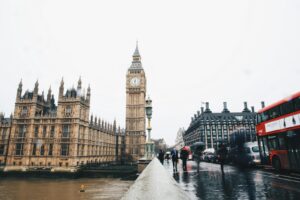800k vulnerable people ‘slipped through the net’
Around 800,000 extremely vulnerable people ‘slipped through the net’ at the beginning of the pandemic and failed to get the necessary support, according to a new report.
The report by the public accounts committee said there was no pre-existing plan for shielding the clinically vulnerable last Spring.
It adds the government ‘took too long to identify some clinically vulnerable people at a time when their need was urgent’.
And it estimates that to 800,000 people may have ‘slipped through the net and missed out on much-needed support’.
The report says subsequent engagement with local health bodies across the country ‘introduced a postcode lottery’ with huge local variations in those added to the list of people eligible for government support.
Those lists grew by 15% up to 352% in different local authority areas, and more than doubled in 33 authorities.
The committee said ‘clearly government has learned lessons which have fed into more recent iterations of shielding’, including much greater understanding of the range of Covid-19 risk factors.
But it added that the Ministry of Housing, Communities and Local Government must ensure that local authorities ‘continue to have the capacity and resilience to support the needs of clinically extremely vulnerable people’ given the huge increase in people advised to shield in February 2021 from 2.2 million to 3.9 million people.
‘The shielding response in the Covid pandemic has particularly exposed the high human cost of the lack of planning for shielding in pandemic planning scenarios. It also highlights the perennial issue of poor data and joined up policy systems,’ said committee chair, Meg Hillier.
‘People were instructed to isolate, to protect themselves and others – but the cost of this protection was reduced access to living essentials like food, and an untold toll on the mental health and well-being of the already most vulnerable. There are questions still to be answered about the balance between central decision making and local knowledge – the increase in numbers of those advised to shield demonstrate the challenges of trying to deliver this programme centrally, as well as with the data held by the NHS.
‘Plans were eventually, sensibly devolved to local authorities. There needs to be a clear plan ahead for those with serious health conditions so they can access the support they need when they have no other support network.’
In response, a government spokesman said
A Government spokesperson said the report findings were ‘disappointing and misjudged’.
‘During this globally unprecedented emergency, we worked across multiple government departments to build and deliver an urgent national scheme in record time, identifying 1.8 million clinically extremely vulnerable people and providing them with vital food and medicine to help them shield effectively,’ added the spokesman.
‘We made significant efforts to contact people by letter, text and telephone and worked closely with councils to ensure we reached them. Many people chose not to take up the offer of government support as they felt they didn’t need it.
‘The initial shielding guidance was agreed by the four UK Chief Medical Officers on the basis of the latest available evidence. Since then we have learned more about the virus and adapted our approach, which has enabled us to protect those most vulnerable by providing them with shielding guidance and prioritising them for vaccination.’
Photo Credit – Pixabay
















